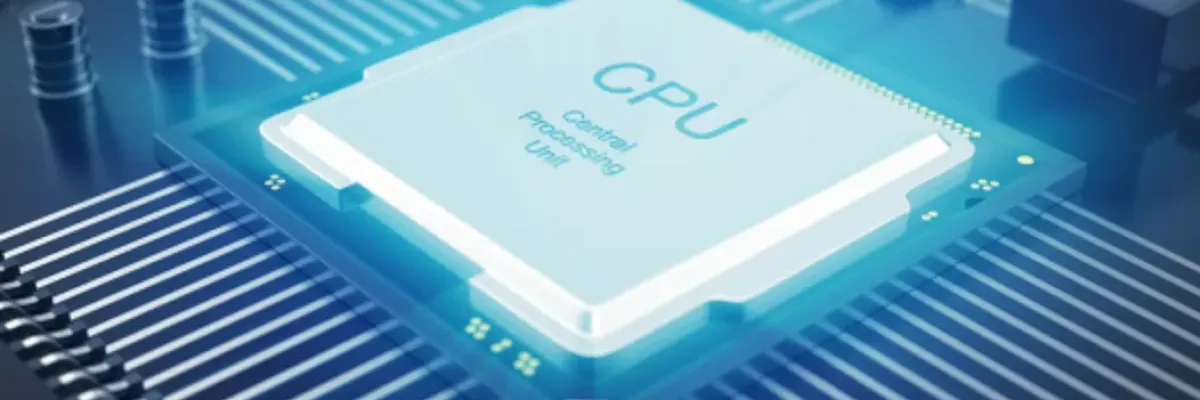
Overview of the Importance of CPUs in India
CPUs (Central Processing Units) are an essential component of modern computing systems and play a crucial role in the growth and development of various industries in India. Here are some ways in which CPUs are important in India:
Information Technology Industry:
The IT industry is one of the fastest-growing sectors in India and is heavily dependent on CPUs. CPU power servers, workstations, and other computing systems are used for software development, data analysis, and other critical tasks in the IT industry.
Manufacturing Industry:
The manufacturing industry in India also relies heavily on CPUs to power industrial automation systems and machines. CPUs are used to control and monitor manufacturing processes, ensuring that products are produced efficiently and to high standards.
Research and Development:
CPUs are vital in research and development activities, including scientific simulations, data analysis, and other computationally-intensive tasks. India has a growing number of research institutes and universities that rely on CPUs for their work.
Education:
The education sector in India is also heavily reliant on CPUs. CPUs power computers and other devices that are used for teaching and learning, including online courses and digital learning resources.
Government Services:
CPUs are critical for various government services in India, including financial transactions, data processing, and other administrative tasks.
Factors that Affect CPU Prices in India
Several factors can affect CPU prices in India.
Demand and Supply:
The basic law of supply and demand plays a crucial role in determining CPU prices. When the demand for CPUs is high, and the supply is low, prices are likely to rise. Conversely, when the supply of CPUs is high, and the demand is low, prices may fall.
Manufacturing Costs:
The cost of manufacturing CPUs, including raw materials, labor, and overhead costs, can impact the final price of the product. If the manufacturing cost increases due to factors like inflation or a shortage of raw materials, it may result in higher CPU prices.
Technological Advancements:
Technological advancements in CPU technology can lead to price changes. As newer and more advanced CPUs are introduced into the market, the prices of older CPUs may decrease. This happens because the demand for older CPUs decreases as customers prefer the latest and most advanced products.
Currency Fluctuations:
The prices of CPUs can also be affected by fluctuations in currency exchange rates. For example, if the value of the Indian rupee decreases against the US dollar, the cost of importing CPUs from other countries may increase, leading to higher CPU prices in India.
Government Policies:
Government policies, such as taxes, tariffs, and import/export regulations, can also impact CPU prices. Changes in these policies can lead to price fluctuations in CPUs, depending on whether they are beneficial or detrimental to the CPU market.
How to Choose the Right CPU for Your Needs
Choosing the right CPU (Central Processing Unit) is crucial for getting the best performance out of your computer system. Here are some factors to consider when selecting a CPU that meets your needs:
Processor Type:
The two main CPU types are Intel and AMD processors. Both have their strengths and weaknesses, so it's essential to research and compare them to find the one that best suits your needs.
Clock Speed:
CPU clock speed, measured in GHz (gigahertz), refers to how fast the CPU can process instructions. A higher clock speed generally translates to better performance, but it also means higher power consumption and heat generation.
Cores and Threads:
CPUs come with a specific number of cores and threads, which determine how many tasks the CPU can handle simultaneously. More cores and threads typically mean better performance, especially for multitasking and demanding applications.
Cache:
A CPU cache is a small amount of memory located on the CPU chip that stores frequently accessed data. A larger cache can help boost performance by reducing the time it takes for the CPU to access frequently used data.
TDP (Thermal Design Power):
TDP refers to the amount of heat the CPU generates and the cooling system needed to keep it within safe operating temperatures. Higher TDP CPUs generally require more robust cooling solutions and consume more power.
Budget:
CPUs come at different price points, and it's essential to consider your budget when selecting a CPU. While high-end CPUs offer top-tier performance, they may not be necessary for all users, and a mid-range or budget CPU may suffice.
Compatibility:
It's crucial to ensure that the CPU you choose is compatible with your motherboard, RAM, and other components. Check the specifications and socket type of your motherboard before selecting a CPU.
Future of CPUs in India
The future of CPUs (Central Processing Units) in India looks promising, given the rapid advancements in technology and the country's growing digital economy. Here are some key trends that are likely to shape the future of CPUs in India:
Increased Demand for High-Performance CPUs:
As India's digital economy continues to grow, there will be a higher demand for CPUs that offer top-tier performance for applications like gaming, AI, machine learning, and data analytics.
Emphasis on Energy Efficiency:
With rising concerns over environmental sustainability and energy consumption, there will be a greater emphasis on CPUs that offer high performance while consuming less power and generating less heat.
Adoption of Advanced Technologies:
CPUs with advanced technologies like AI accelerators, integrated graphics, and specialized instructions for specific applications are likely to gain popularity in India.
Increasing Importance of Cloud Computing:
Cloud computing is rapidly gaining popularity in India, and this trend is likely to continue in the future. CPUs that can support cloud-based applications and services will be in high demand.
Shift to Mobile Computing:
With the increasing popularity of mobile devices, CPUs designed for mobile devices like smartphones and tablets will continue to evolve and improve in performance.
Focus on Local Manufacturing:
With the government's push for local manufacturing, there will be an increased focus on producing CPUs and other components within India, leading to more job opportunities and increased innovation.
